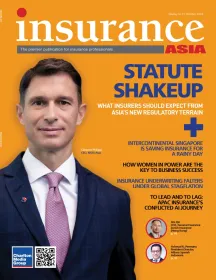
Working Indian women lead in life insurance ownership
The financial security of urban Indian women have gone up to 62% in 2024 from 57% in 2019.
Urban India's working women lead in financial protection, surpassing men in life insurance ownership for the first time in five years.
About 77% of working Indian women own life insurance compared to 74% of men, according to the fifth edition of the India Protection Quotient survey (IPQ 5.0) by Max Life Insurance.
“It reflects the strides society is making in gender equity through financial inclusion. The milestone of working women surpassing men in life insurance ownership for the first time in five years is an important one depicting a bright future ahead,” said Prashant Tripathy, managing director and chief executive officer of Max Life Insurance.
Thus, women homemakers showed a protection quotient of 38, with an increase in the Knowledge Index from 38 (2019) to 49 (2024).
The survey, in partnership with KANTAR, further revealed that urban Indian women’s financial protection level has increased from 33 to 40 in the last five years.
Post-pandemic, women's confidence in financial security has risen to 62% (from 57%), whilst life insurance ownership for all women has increased from 71% (from 67%).
ALSO READ: India’s life insurance premiums fall in January
Urban Indian women also expressed reduced concerns about term plan sufficiency, dropping from 61% (2019) to 48% (2024), post-pandemic. However, there is a comprehension gap on the importance of 'Sum Assured' in purchasing term plans.
In terms of ownership of term plans, working women surpassed men at 33% whilst over 54% of women homemakers demonstrated awareness of term insurance products.
Efforts to close the gender gap in life insurance ownership were also evident, with only a 3% difference compared to men. The Knowledge Index for women, however, remains relatively stagnant.
Moreover, working women also demonstrated financial prudence by allocating 45% of their income to savings and investments. They also allocated 40% to basic expenditures and 14% to luxury spending.
66% of women prioritized saving for their children's education. Additionally, 49% of women showed a greater inclination to save for their children's marriage than men at 39%.



















 Advertise
Advertise


